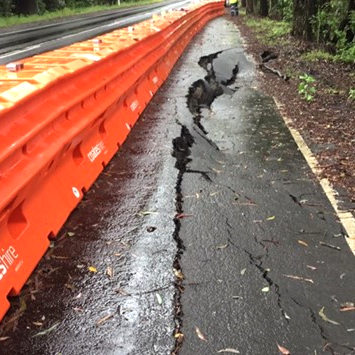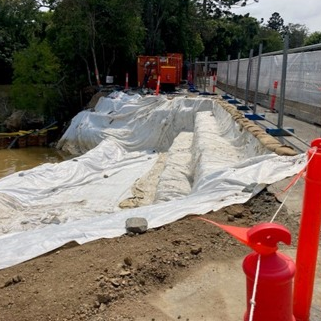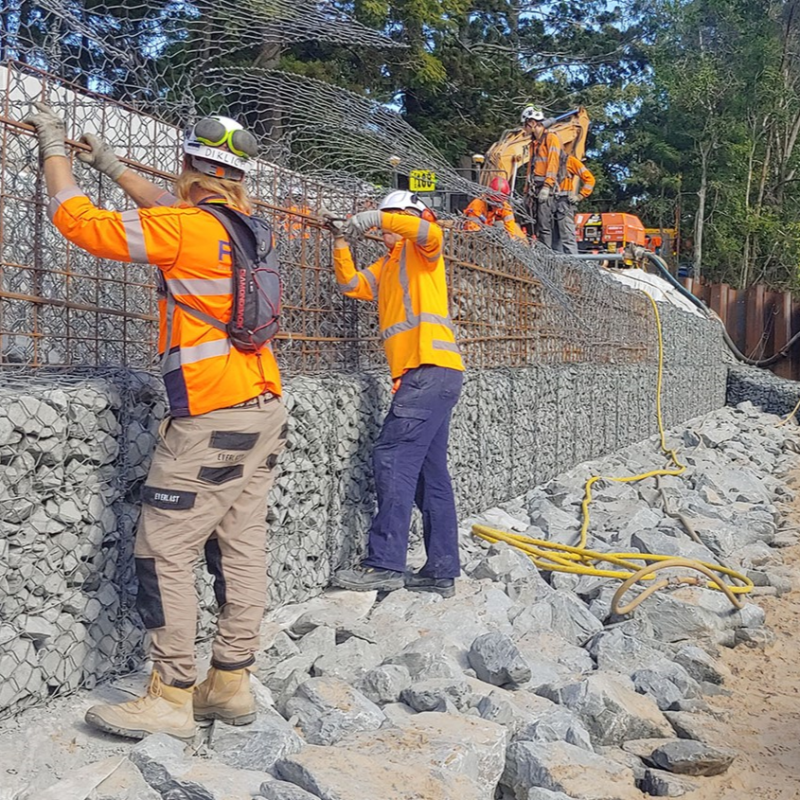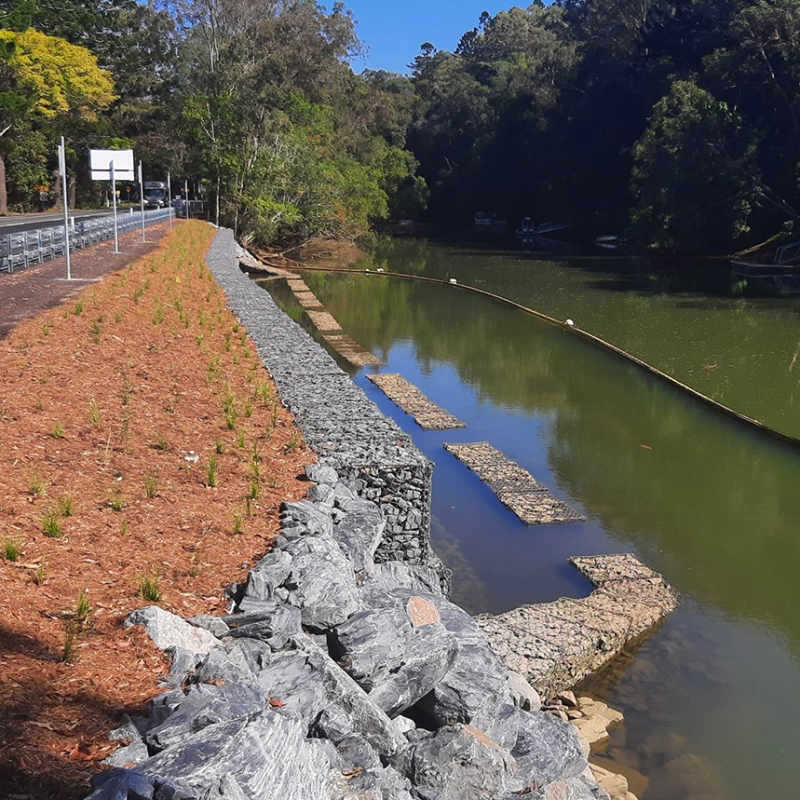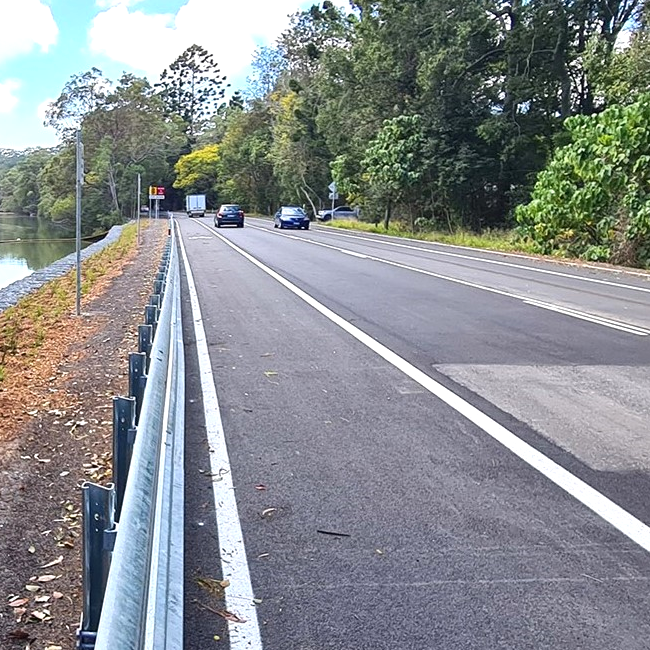Ancient Egyptian engineering solution rocks Gold Coast road restoration
Since the ancient Egyptians invented them around 7000 years ago, gabions have proven to be particularly useful in a variety of applications.
Created to control flood waters from the river Nile and prevent erosion, the rock-filled baskets have also been used by the military since medieval times to protect bases and troops and, since the late 19th century, in civil engineering projects including retaining walls, noise barriers, dams, and roadworks.
Gabions, unlike solid walls, are designed to allow water to flow through their structure in a controlled manner.
With the water seeping through the gabions, pressure behind them is reduced which minimises the chances of erosion.
Gabions were a crucial element of work to restore Currumbin Creek Road on the Gold Coast following extensive damage caused by a series of extreme weather events in 2021 and 2022.
Damage was particularly severe along the two kilometre stretch of Currumbin Creek Road between Bourke Lodge Drive and Galleon Way which runs along Currumbin Creek.
Geotechnical investigations found that the flooding had eroded the banks of Currumbin Creek damaging the road surface along that stretch of Currumbin Creek Road.
Emergency works by Queensland’s Department of Transport and Main Roads (TMR) removed debris, repaired the pavement, and prevented further erosion at five sites along the road.
Subsequent work focused on stabilising the creek bank to minimise erosion and prevent further damage to the road.
For that work, gabions offered an effective, value-for-money solution.
Leaving no stone unturned, more than 5000 tonnes of rock were used in more than 1100 gabion baskets, as well as associated foundations, installed across all five sites.
In the early stages of reconstruction works in mid-2023, it was necessary to remove some vegetation between the road and the creek bed to enable installation of the gabion baskets.
It was a delicate operation as all sites required reconstruction works to be undertaken behind sheet piling in the creek bed due to works occurring below the tide level.
Accordingly, TMR focused on limiting the impact on the surrounding environment, carefully balancing the need to remediate the damage to the creek bank and road.
TMR worked with designers to minimise environmental impacts and promote the recolonisation of mangroves which provide habitat for juvenile fish, and aid in bank stabilisation.
Work on two sites was completed in the first quarter of 2024 followed by the completion of work at another two sites in August 2024 with the fifth site wrapped up in April 2025.
The recovery works were jointly funded by the Australian and Queensland Governments through the Disaster Recovery Funding Arrangements (DRFA).
Pavement strengthening work on the fifth section was funded through the 2021–22 Betterment Program.
